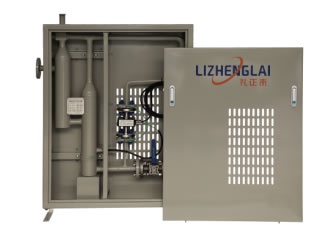- Analysis of the Reasons for the excessive temperature of the Flue gas at the Outlet of the suction Tower in the operation of the Sulfuric Acid Plant
Preface
Consequences of flue gas overheating
During the operation of the sulfuric acid plant, the flue gas at the outlet of the first suction tower may experience an over-temperature phenomenon. When the temperature rises, the thermal equilibrium of the subsequent conversion is disrupted, resulting in the temperature of the third and fourth conversion stages remaining persistently high, especially when operating under high-temperature loads or high gas concentration conditions. If the conversion temperature remains at a high level for a long time, the ignition temperature of the catalyst will rise, which is not conducive to the normal operation of the device, and at the same time, the service life of the catalyst will also be shortened. In addition, if the flue gas temperature at the outlet of the first suction tower continues to rise, it will cause irreversible damage to the demister inside the tower. Under normal circumstances, fiber demisters can operate stably for a long time at temperatures below 85℃. However, if the temperature exceeds 150℃, they will be quickly burned out and lose their demisting function. If the flue gas contains acid mists, as the temperature rises, the corrosion rate of the equipment will also increase accordingly.
I. Analysis of the Causes of Flue Gas Overheating
With the continuous development of the sulfuric acid industry and the continuous improvement of thermal energy utilization rate, the traditional one-absorption tower has gradually been replaced by high-temperature absorption towers to utilize more absorbed thermal energy. The control of the flue gas temperature at the outlet of the high-temperature absorption tower is also more crucial. The main reasons for the over-temperature of the outlet flue gas are as follows:
First, the influence of circulating acid temperature: The circulating acid temperature is a key parameter for regulating the outlet flue gas temperature. After entering the packing layer, sulfuric acid comes into direct contact with the flue gas. While absorbing sulfur trioxide, it also absorbs the heat in the flue gas. If the contact area is large enough and the contact time is long enough, the excess heat in the flue gas will be completely absorbed by the sulfuric acid, thus achieving temperature equilibrium. In an ideal state, we can assume that the temperature of the flue gas leaving the packing layer is almost the same as that of the sulfuric acid entering the packing layer. If the acid temperature at the top of the tower is relatively high, the temperature of the flue gas leaving the tower will also increase accordingly. For high-temperature heat recovery towers, to fully utilize the high calorific value heat, the primary acid temperature is usually controlled at a relatively high level, while the secondary acid temperature plays a crucial role in controlling the outlet flue gas temperature. Through thermal energy calculation (this calculation method can be obtained by downloading the parameter query in the "Digital Sulfuric Acid APP"), the flue gas temperature at the outlet of the high-temperature heat recovery tower is simultaneously affected by the primary acid temperature and the secondary acid temperature. Therefore, when the secondary acid temperature is relatively high, the flue gas temperature at the outlet of the high-temperature absorption tower will also increase accordingly.
Second, the influence of circulating acid volume and acid concentration: As mentioned earlier, the contact time between sulfuric acid and flue gas needs to be long enough, which requires ensuring a certain scale of circulating acid volume. The circulating acid volume is a key parameter affecting the absorption efficiency. Generally, the circulating acid volume is determined by the acid concentration difference between the upper and lower towers or the acid spray density. The acid concentration difference of a traditional single-suction tower is generally 0.2-0.4%, and the spray density is 15-25m³/m²·h. If the acid flow rate is low, the absorption efficiency will decline, and at the same time, the temperature of the flue gas at the outlet will rise. For high-temperature absorption towers, in order to fully utilize heat, the acid concentration difference is usually maintained at the upper limit of 0.4% or higher, but its absorption efficiency can only reach about 90%, and the flue gas temperature cannot be effectively controlled. Therefore, a two-stage absorption process was introduced, that is, the flue gas after the first-stage absorption is further absorbed by a certain amount of secondary acid. This not only ensures the absorption efficiency but also reduces the flue gas temperature. Due to the excessively high acid temperature inside the high-temperature absorption tower and the presence of air in the sulfuric acid at the outlet of the diluter, it is difficult to measure the sulfuric acid concentration, which in turn leads to higher measurement results, resulting in a decrease in absorption rate and an increase in flue gas temperature. Therefore, precise measurement of acid concentration is the key guarantee for reducing the excessively high temperature of flue gas. The high-temperature acid concentration analyzer of Lizhenglai Company can effectively solve the problem of acid concentration measurement in high-temperature environments.

(High-temperature acid concentration analyzer)
Third, the influence of the acid separator and packing: As mentioned earlier, the contact area between sulfuric acid and flue gas needs to be large enough. To ensure this condition, it is first necessary to guarantee the uniformity of acid distribution, which requires the use of efficient acid separation equipment to evenly cover the surface of the packing material. At present, the acid separator can achieve a distribution density of up to 46 points per square meter. Secondly, to further increase the contact area, it is necessary to rely on the function of packing. Currently, the specific surface area of packing can reach 140 square meters per cubic meter, ensuring that the acid flows on the surface of the packing and fully contacts with the flue gas.
Therefore, the acid separator and packing are the key factors influencing the outlet temperature of flue gas. If the acid distribution is uneven, it will cause the temperature of the flue gas at the outlet to rise. Improper selection, damage or collapse of packing materials can also cause the temperature of the flue gas at the tower outlet to rise.
Fourth, other reasons: The contact time is also affected by the flue gas flow rate. If the flow rate is too fast, it is not conducive to the absorption of sulfuric acid (including energy absorption). Therefore, the selection of tower diameter is crucial, and the gas volume also needs to be precisely controlled. If the temperature of the flue gas entering the tower is too high, it will cause the temperature of the flue gas leaving the tower to exceed the standard. Uneven distribution of conversion rates: If the conversion rate of the first phase is too high and the absorption capacity of the first phase tower exceeds the upper limit, resulting in incomplete absorption, it will also cause the temperature of the flue gas leaving the tower to exceed the standard.


